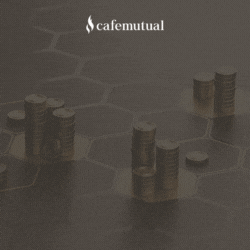How will the lockdown impact overall earnings?
The economy will be impacted at two levels: the direct loss of economic activity during the lockdown period and the second order impacts caused by business shutdowns, loss of employment, change in consumer behavior and the strain on financial system. Both of these put together are likely to shave off some percentage points from GDP growth in FY21 with some estimates pointing to close to no growth.
In that context, FY21 will likely be a washout year for corporate earnings as fixed costs and interest burden will continue even as toplines struggle at least for the first half.
Rural economy and healthcare are amongst the pockets that should provide some cushion. Beyond the next few quarters, earnings can stage a sharp uptick provided the policy responses to mitigate the second round impacts are prompt, bold and decisive.
From a medium to longer term perspective, the crisis can actually improve the economic growth and earnings prospects for India. On one hand, continued period of cheap capital globally will help a capital deficient country like ours. On the other, as global firms start weighing reliability against efficiency post this episode, case for just-in-time and super concentrated supply chains may weaken. This amidst rising distrust of China could position India as a strong alternative.
This is a defining moment in global geopolitics and India can play a key role in the post Covid world provided we are ready with the appropriate administrative, regulatory and judicial realignment.
How will the recent plunge in crude oil prices affect equity markets going ahead?
Given the magnitude of the plunge in crude prices, the impact on India isn’t straight forward. While falling oil is positive for India’s external balance with estimated savings of US$ 1.5bn per dollar decline in oil price, there are several deeper impacts too. For example, US is the largest producer of oil and a large part of its Shale Gas industry could potentially be at risk creating trouble for the world’s largest economy.
Impact of weak global growth will be felt by Indian economy as well as corporate India. On the other hand, this could also mean lower FPI appetite and hence reduced flows into India. These factors will offset direct benefits from reduced oil bill. Yet, to capitalize on reduced prices, we should aggressively use our forex reserves to build oil reserves. The space created by lower inflation as also savings on fiscal front should be used to stimulate the economy through font-loaded policy action.
Which sectors are you overweight and underweight on?
We are bottom-up in our approach and are pursuing franchises across sectors that in our view will not just survive but also emerge stronger on the other side of the crisis. There are some sectors however that do stand out. Healthcare for example has likely seen the worst of earnings cycle and valuations are quite attractive after years of de-rating. While it acts as defensive in the near term, it should also benefit as globally trillions of dollars get spent on healthcare as a response to the current crisis. Digital adoption is exploding and could create opportunities for technology companies and in the same vein industrial automation should pick up benefitting plays thereof.
As global policy makers respond to the economic disruption with unprecedented fiscal stimulus, investment activity and global trade could pick-up at some point in not so distant future. Also as global firms weigh reliability against efficiency, case for just-in-time and super concentrated supply chains may weaken. This amidst rising distrust of China could position India as a strong alternative. Manufacturing exports as a theme therefore should do well.
Several PSU utilities are trading at yields significantly above bond yields even as they continue to be growing businesses, offering good opportunities. On the flip side, financials and discretionary consumption are likely to be the worst impacted in the crisis; however, the deep price cuts will make stronger, leading franchises attractive at some point.
What category of funds should MFDs recommend to their clients at this point?
For patient long-term investors, market corrections like these provide good opportunities in equity funds. Several valuation measures such as market cap to GDP and long-term earnings-based yield spread were in the vicinity of lows in March end suggesting attractive entry points for long term investors.
Sentiment measures too had swung towards extreme pessimism which tends to be positive for prospective returns in general. The markets have recovered somewhat since then. While time wise, volatility may persist till uncertainty on near-term economic growth and earnings outlook continues, investments made now will be rewarding in the long run. We recently opened our small-cap fund as we are finding good opportunities post the fall.
On debt, the RBI continues to undertake bold and creative monetary response to the crisis as the inflation, growth and external account dynamic stays favorable. In this context, we stay long duration while maintaining a cautious stance on credit. Dynamic bond fund, corporate bond fund, Banking and PSU debt fund, short term fund can be looked at.
Finally, in the wake of unprecedented global money printing and a likely prolonged period of negative real yields, gold should provide the right diversification to financial assets like equities and fixed income. A fund class that allows investors the benefits of diversification across asset classes: equities, fixed income and gold, without having to worry about timing is the multi-asset fund category and becomes especially relevant in uncertain times like these.
At this point, what investment approach (e.g. - SIPs, STPs, lumpsum) is the most efficient to capture the volatility/downside?
While some categories like gilt funds may be tactically appropriate at the moment, others like multi-asset are evergreen in that not having to time asset classes is their key benefit. However, we believe investments should be made keeping clients’ long term goals and risk appetite in mind and a systematic approach works best. This is especially true for, but in no way limited to, volatile assets like equities.





